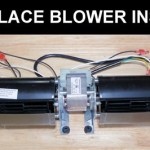Replacement Glass For Fireplace Insert Doors: A Comprehensive Guide
Fireplace inserts offer an efficient and aesthetically pleasing way to heat a home. They are designed to fit within existing fireplaces, providing improved heat output and control compared to traditional open fireplaces. A crucial component of a fireplace insert is the glass door, which allows for viewing the fire while preventing sparks and embers from escaping, enhancing safety and efficiency. However, fireplace insert glass doors are susceptible to damage from heat, impact, or age, necessitating replacement. This article provides a comprehensive guide to understanding replacement glass for fireplace insert doors, covering types of glass, factors to consider when selecting replacement glass, the replacement process, and maintenance tips.
Understanding the Importance of Fireplace Insert Glass
The glass in a fireplace insert door serves several critical functions. Primarily, it acts as a barrier, preventing sparks, embers, and smoke from entering the living space. This significantly reduces the risk of fire hazards and improves indoor air quality. The glass also contributes to the efficiency of the fireplace insert by containing the heat within the firebox and radiating it into the room. This enclosed environment allows for better control of the combustion process, leading to more efficient burning and reduced fuel consumption. A clear, undamaged glass door also provides a visual appeal, allowing individuals to enjoy the ambiance of the fire safely and comfortably. Without a properly functioning glass door, the insert's efficiency, safety, and aesthetic value are compromised.
Furthermore, the type of glass used in fireplace inserts is specifically designed to withstand the extreme temperatures generated by a fire. Ordinary glass would shatter under such conditions. Therefore, specialized heat-resistant glass is essential for ensuring the safe and effective operation of the insert. The glass must be able to endure repeated heating and cooling cycles without cracking or breaking. Selecting the correct type of replacement glass is paramount for maintaining the integrity and performance of the fireplace insert.
Types of Heat-Resistant Glass for Fireplace Inserts
Several types of heat-resistant glass are commonly used in fireplace insert doors, each possessing unique properties and suitability for different applications. Understanding the characteristics of each type is crucial for making an informed replacement decision:
Ceramic Glass: Ceramic glass, such as Neoceram or Robax, is the most common type of glass used in fireplace inserts. It is engineered to withstand extremely high temperatures, often up to 1382°F (750°C). Ceramic glass has a very low coefficient of thermal expansion, meaning it expands and contracts very little when exposed to heat. This property makes it highly resistant to thermal shock, the cracking or shattering that can occur when glass is subjected to rapid temperature changes. Ceramic glass is typically amber-tinted to reduce glare and enhance the viewing experience. It's a durable and reliable option suitable for most fireplace insert applications.
Borosilicate Glass: Borosilicate glass, like Pyrex or Duran, is another type of heat-resistant glass that can be used in fireplace inserts, although it is less common than ceramic glass. Borosilicate glass is known for its excellent resistance to thermal shock and chemical corrosion. It can withstand temperatures up to 500°F (260°C) and is often used in laboratory glassware and industrial applications. While borosilicate glass is more resistant to scratches and chemical attack than ceramic glass, it is generally more expensive and may not be necessary for standard fireplace insert use.
Tempered Glass: Tempered glass is not typically used as a primary glass for the insert's door directly facing the fire. Tempered glass is strengthened through a heat treatment process that makes it more resistant to impact. However, it does not handle high temperatures as well as ceramic or borosilicate glass. If used near the firebox, it is more likely to shatter when exposed to extreme or fluctuating temperatures. Tempered glass is sometimes used in secondary or outer layers of fireplace doors for added safety, but it should never be the sole barrier between the fire and the room.
The selection of the appropriate glass type depends on the specific requirements of the fireplace insert and the manufacturer's recommendations. Consulting the insert's manual or contacting the manufacturer can provide valuable guidance in choosing the correct replacement glass.
Factors to Consider When Selecting Replacement Glass
When selecting replacement glass for a fireplace insert door, several factors must be considered to ensure proper fit, performance, and safety:
Size and Dimensions: Accurate measurements of the original glass are essential. Measure the height, width, and thickness of the glass to ensure the replacement fits properly within the door frame. Using the wrong size can lead to air leaks, reduced efficiency, and potential safety hazards. Measure twice and order once is a wise approach.
Glass Type: As discussed previously, the type of glass is crucial. The manufacturer of the fireplace insert will typically specify the required glass type in the owner's manual. If the manual is unavailable, research the make and model of the insert to determine the correct glass type. Using a different type of glass than recommended can compromise safety and performance.
Thickness: The thickness of the glass is also important. Fireplace insert glass typically ranges from 3/16 inch to 1/4 inch thick. Using a thinner glass than specified can increase the risk of cracking or breaking, while using a thicker glass may not fit properly within the door frame.
Gasket Material: The gasket material that seals the glass to the door frame is critical for preventing air leaks. The gasket should be heat-resistant and provide a tight seal. When replacing the glass, it is often recommended to replace the gasket as well. Ensure the gasket is the correct size and type for the fireplace insert.
Clips and Hardware: Fireplace insert doors often use clips or other hardware to secure the glass in place. Inspect these components for damage or wear and replace them as needed. Using damaged or worn hardware can compromise the integrity of the door and increase the risk of glass breakage.
Safety Standards and Certifications: Ensure that the replacement glass meets relevant safety standards and certifications. Look for glass that is specifically designed and tested for use in fireplace inserts. This will provide assurance that the glass can withstand the high temperatures and thermal stresses associated with fireplace operation.
The Replacement Process: A Step-by-Step Guide
Replacing the glass in a fireplace insert door typically involves the following steps. However, it is crucial to consult the specific instructions provided by the fireplace insert manufacturer for the most accurate guidance:
1. Safety Precautions: Before starting any work, ensure the fireplace insert is completely cool. Disconnect the power supply to the insert if applicable. Wear safety glasses and gloves to protect against glass shards and sharp edges.
2. Remove the Door: Carefully remove the fireplace insert door from the firebox. This may involve unscrewing or unlatching the door from its hinges or frame. Place the door on a flat, stable surface covered with a protective cloth or cardboard.
3. Remove the Old Glass: Depending on the door design, the glass may be held in place by clips, screws, or a retainer frame. Carefully remove these components to release the old glass. Note the order and orientation of these parts for reassembly.
4. Clean the Door Frame: Thoroughly clean the door frame, removing any debris, dirt, or old gasket material. Use a wire brush or scraper to remove stubborn residue. Ensure the frame is clean and smooth to provide a proper surface for the new gasket.
5. Install the New Gasket: Apply the new gasket material around the perimeter of the glass opening. The gasket should be properly seated and evenly compressed to create a tight seal. Some gaskets may be self-adhesive, while others may require adhesive glue. Follow the manufacturer's instructions for gasket installation.
6. Install the New Glass: Carefully position the new glass within the door frame, ensuring it is centered and properly aligned. Replace the clips, screws, or retainer frame to secure the glass in place. Tighten the fasteners evenly to avoid putting undue stress on the glass. Over-tightening can cause the glass to crack.
7. Reinstall the Door: Carefully reinstall the door onto the fireplace insert. Ensure the door is properly aligned and securely latched or screwed into place. Test the door to ensure it opens and closes smoothly.
8. Test the Fireplace Insert: After completing the replacement process, allow the adhesive (if used) to cure fully, as directed by the manufacturer. Start a small fire to test the fireplace insert and ensure the glass is properly sealed and functioning correctly. Monitor the glass for any signs of cracking or leaking.
If any difficulties are encountered during the replacement process, consulting a qualified fireplace technician is recommended.
Maintenance Tips for Fireplace Insert Glass
Proper maintenance can extend the life of fireplace insert glass and ensure optimal performance. Regular cleaning and inspection are essential for preserving the glass's clarity and structural integrity:
Regular Cleaning: Clean the glass regularly to remove soot, creosote, and other deposits. Use a specialized fireplace glass cleaner or a mixture of water and white vinegar. Avoid using abrasive cleaners or pads, as they can scratch the glass. Apply the cleaner to a soft cloth and gently wipe the glass. Wipe dry with a clean cloth.
Avoid Overloading the Firebox: Avoid overloading the firebox with too much fuel, as this can generate excessive heat and stress on the glass. Follow the manufacturer's recommendations for fuel load and burning practices.
Proper Burning Practices: Burn seasoned wood that is dry and properly cured. Burning wet or unseasoned wood can produce excessive smoke and creosote, which can accumulate on the glass and reduce visibility.
Inspect the Glass Regularly: Inspect the glass regularly for any signs of cracks, chips, or warping. If any damage is detected, replace the glass immediately to prevent further damage and ensure safety.
Check the Gasket: Inspect the gasket material around the glass for any signs of wear or damage. Replace the gasket if it is brittle, cracked, or no longer providing a tight seal.
Avoid Impact: Protect the glass from impact by avoiding contact with hard objects. Be careful when handling tools or logs near the glass.
By following these maintenance tips, individuals can prolong the life of their fireplace insert glass and maintain its performance and safety.

Prefab Fireplace Doors Large Selection Affordable

Heat N Glo Replacement Glass Doors Fireplace Safety

Nightwell Replacement Fireplace Door For Prefab Fireplaces

Wood Stove Glass Replacement With Free

Glass Fireplace Doors Replacement Guaranteed Fit Brick Anew

Stove Glass Doras Fire Door Stovepartsdirect Ie

Nightwell Replacement Fireplace Door For Prefab Fireplaces Doors Art Deco Carpet

Fireplace Glass Doors Vs Screens Full Service Chimney
Everything You Need To Know About Fireplace Glass Door Replacement Demers

Standard Size Masonry Fireplace Doors Fixed Frame
Related Posts








